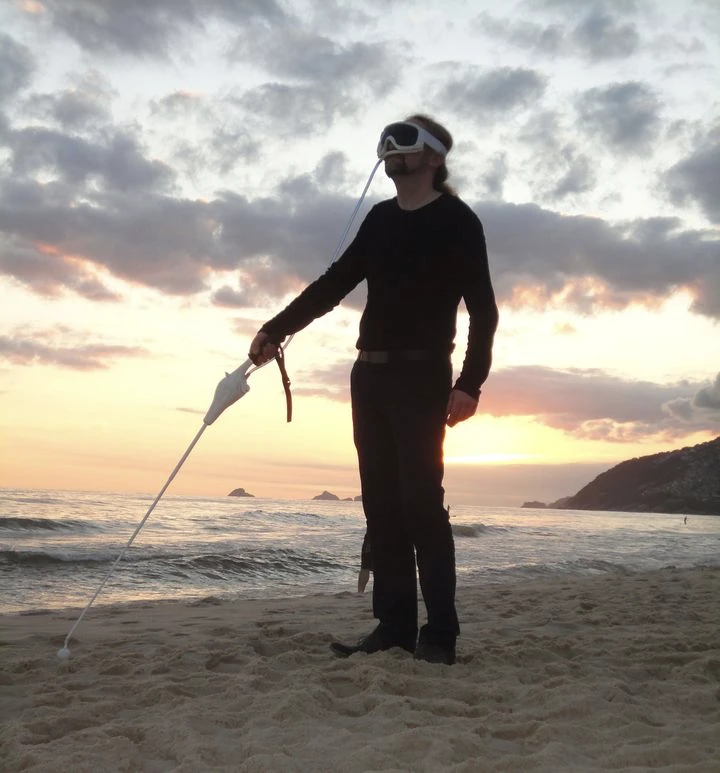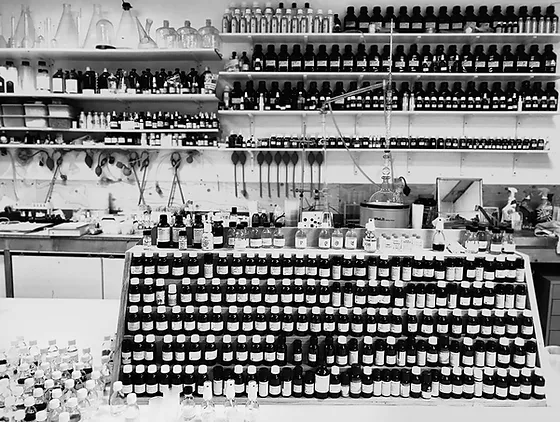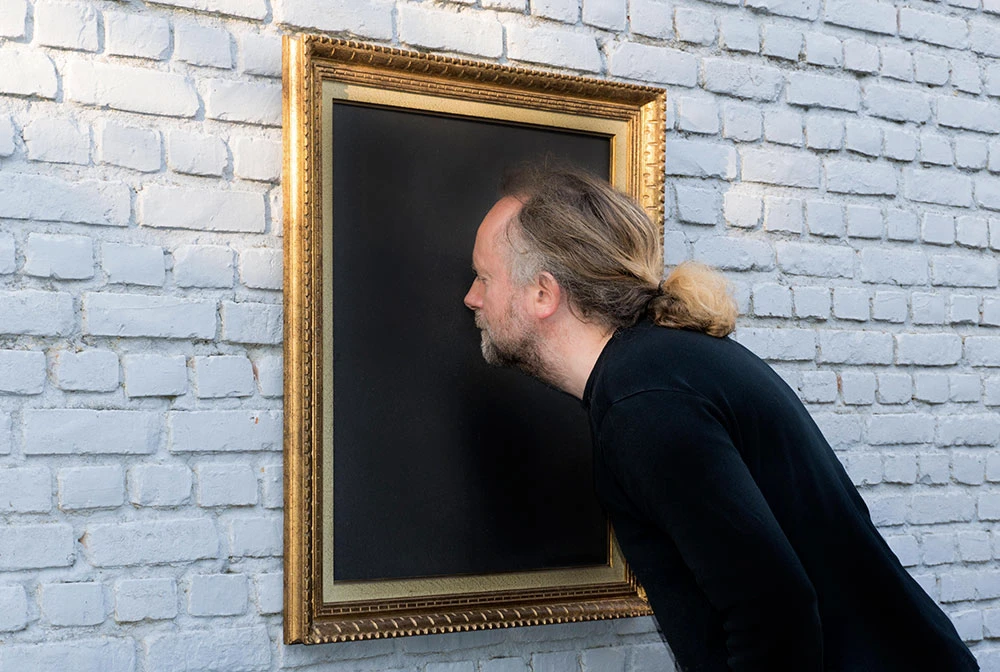IN CONVERSATION WITH CARO VERBEEK
On the 9th of September 2023, Panoptès held a conversation between artist Peter de Cupere and art historian Caro Verbeek.
Caro Verbeek first made an introduction on olfactory art, arguing that smells and scents are very much part of our (im)material heritage and of art history. We learnt that they were very much present, at the beginning of the 20th century, within the Futurist movement. Marinetti, for example, wrote extensively about it and, in 1913, Valentine de Saint-Point realized a dance with scents titled La Métachorie. The latter is one of the first examples of an olfactory work of art. In the 1930s, Bruno Munari diffused smells when projecting his artistic films. Others such as Filippo Tommaso Marinetti and the poet Fillia realized a multi-sensory experience called Il Manifesto della Cucina Futurista, involving taste, temperature, structure, touch, sight, small and music/noise. A few years later, the Surrealists organized multi-sensory exhibitions, each containing smells, such a coffee.
Marcel Duchamp and Andy Warhol themselves considered smells crucial. Warhol notably aspired to create a smell museum so that the smells he attributed to certain lived experiences and memories would not perish. This historical fact raised the question of olfactory works’ lasting quality, which in turn lead us to evoke the importance of technology and techniques such as gas chromatography. Technical and technological advances may indeed allow us not only to shape smells and olfactory artworks, but also to render them more persistent. A prospect to which one could object that the interest of olfactory art may lie in the very fact that it disappears – its fragility, its strictly atmospheric nature, its immateriality.
Because smell has a great added value, providing a richer, more vivid experience, artists, art institutions and entities specialized in fragrances should collaborate in order to preserve and promote this crucial and delicate heritage. A wider vocabulary would also be needed.
An important representative of this emerging art field is Belgian artist Peter de Cupere. Since the late 1990s, he has created more than a thousand olfactory works, intended to make us attentive to the experience(s) of smelling. « With every breath, there is a smell », which should be reason enough to give more credit to this very complex and rich sense of ours.
Exploring technology, de Cupere invented the Olfactio, in collaboration with Cartamundi. He also invented the first working scent piano, titled Olfactiano. In 2012, he developped The Blind Smell Stick and The Blind Smell Touch, smell devices allowing spectators to find their way or experience objects or food just by smelling, which were notably exhibited at the World Creativity Biennale in Rio de Janeiro.
In 2014, a century after Carlo Carra’s manifest titled The Painting of Sounds, Noises, Smells: Futurist Manifest, de Cupere wrote The Olfactory Art Manifest, which he signed with his own smell (collected extensively during a two-year period).
Peter de Cupere was born in 1970 in Leuven, Belgium. He now lives and works in Antwerp and Hasselt. He is a professor and a researcher at the PXL-MAD School of Arts in Hasselt where he teaches the use of smell, taste and tactility in art. He devoted his PhD thesis to the uses of scents in art. In 2018, in London, he received the Art and Olfaction Award for his lifetime contribution to promote the use of scent in art. In 2022, in Ghent, he received the Public International New Technology Art Award for his work Salt Flowers. He is member of the Advisory Board of Odeuropa, a project to show that critically engaging our sense of smell and our scent heritage is an important and a viable means for connecting and promoting Europe’s tangible and intangible cultural heritage.
Caro Verbeek, born in 1980 in The Netherlands, is an art historian, curator and professor specialized in sensory art and the lower senses. She is an embedded researcher of olfactory heritage at the Vrije Universiteit Amsterdam and the Rijksmuseum. She teaches the course « The Other Senses » at the Royal Academy of Arts The Hague and is the curator in chief of the olfactory culture program ‘Odorama’ at Mediamatic Amsterdam. Finally she is an advisor for immaterial heritage projects at Mondriaan Fonds. Her PhD, titled In Search of Lost Scents – Reconstructing the Aromatic Heritage of the Avant-garde, which gained international recognition, was another step in helping modify our understanding of this ephemeral history, preserve it and in creating the language to do so.



